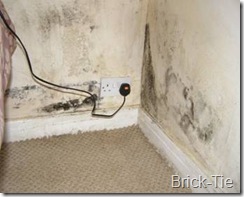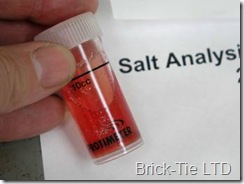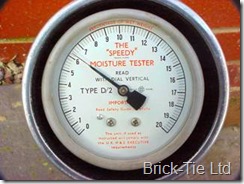Damp is a four letter work nobody wants to hear. We all use it, but it can mean so many different things to different people:
- Stained walls and ceilings
- Salty masonry and plaster
- Peeling paint
- Musty odours
- Rotten skirting and
- …mould.
In reality, all of these are just symptoms, produced by moisture, being in the wrong place and in excessive amounts. We’ve all seen these problems, however dampness may also be present in buildings, without any discernable symptoms, accumulating below floors, in voids and behind plaster, where it can be a real problem, causing hidden damage to in-built timbers and encouraging insect attack.
This is where remedial surveyors are so valuable, particularly to anyone buying or renovating a house or a commercial building. Specialist qualified CSRT surveyors are trained to find these problems and identify the real cause, so a remedy can be found.
Rising damp, Penetrating damp and Condensation are the three most common sources of moisture. However, there are many more than three reasons why these problems may be present and it is important to treat every building on its own merits – I find that no two properties are the same, those on the same avenue or even next door to one another will differ.
Whilst knowledge and a good pair of eyes are our best tools, advanced moisture meters, with data logging, salt analysis and deep moisture probes are sometimes needed to properly identify the cause.
I don’t survey for free, which means that I don’t need to sell clients anything. Domestic and commercial damp and timber surveys are available from only £60.00, which includes VAT. Reports are always issued in writing, with a digital copy sent by email upon request. Here are some examples of damp from my surveys and some basic information on diagnosis equipment (I’ll blog on how to use them later)

Here’s a classic case of rising damp. Unfortunately it is not always so easy to see as this. The tidemark is due to the contamination of the plaster and wallpaper by minerals dissolved from the ground and deposited by the damp as it rises. We see it in this image because the decoration is very old. Often, repeated re-decoration renders the stains invisible; however modern moisture meters allow a ‘moisture profile’ to be obtained, which reveals the tidemark. The salts in the plaster are also chemically active and a conductivity meter will highlight these.

More staining, this time made by mould growing on a damp wall. This is not rising damp. The mould is growing on a wet wall, in this case due to condensation. This is a house in north Leeds, modernised to form a rented apartment. Unfortunately the developer was not well informed; after bricking up the fireplaces, installing double glazing and sealing all vents – he didn’t install extractor fans into the kitchen or bathroom – this was an inevitable result – be thankful you can’t smell it.
One way of finding the source of moisture is a simple salt analysis – in this case the red colour indicates nitrates are present. Nitrates are derived from the decay of organic compounds; the ‘Nitrogen Cycle’. Salts only move in solution, so accumulation of nitrates in say – a plaster sample, indicates movement of moisture from soil, which has brought organic residues with it. Salt analysis can be useful, but is not definitive and requires careful evaluation, taking site conditions and history into account.
The Protimeter Moisture Measurement system.
Fast and very useful in the right hands, though not a tool for beginners; as with all electrical moisture meters, the results must be interpreted properly.
re is not possible using an electrical meter.
Despite the above list of kit – keen eyes and a detailed knowledge of the science of damp and the construction of buildings is essential for good diagnosis.


